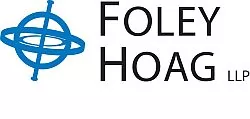In April 2023, we reported on federal efforts to streamline
fusion energy regulations. At that time, the Commissioners of the
Nuclear Regulatory Commission (NRC) voted to approve a proposal expected to
accelerate the commercialization of fusion energy in the United
States. Specifically, the NRC determined that fusion energy should be
regulated under the Nuclear Regulatory Commission's byproduct
material framework contained in 10 CFR Part 30, "Rules of General
Applicability to Domestic Licensing of Byproduct Material,"
rather than Part 50, which are the burdensome licensing rules for
constructing and operating traditional commercial-scale nuclear
fission reactors.
Fusion energy received another boost when the Accelerating
Deployment of Versatile, Advanced Nuclear for Clean Energy Act of
2024 (ADVANCE Act of 2024) was signed into law in
July 2024. According to NRC, the ADVANCE Act requires the
NRC to take a number of actions in the areas of licensing of new
reactors and fuels, including enhancing the regulatory framework
for advanced reactors and fusion technology, and requiring
initiatives to support the NRC's efficient, timely, and
predictable reviews of license applications. In particular, the
ADVANCE Act affirmed the distinction the NRC had made by
introducing a definition of "fusion machine" and
including within the definition of "byproduct material"
material with radiologic activity as a result of the operation of
the fusion machine.
Following the NRC Commissioners' vote to regulate fusion
machines under Part 30 and the passage of the ADVANCE Act, the NRC
has been hard at work preparing proposed rules. After seven NRC meetings, on December 12, 2024, NRC
staff sought Commission approval to publish a "Proposed Rule: Regulatory Framework for Fusion
Machines". The staff-proposed rule was specifically
tailored for the unique characteristics and safety requirements of
fusion machines. Among other elements, the staff-proposed
rules:
- Define fusion machines as a machine that is capable of: (1) transforming atomic nuclei, through fusion processes, into different elements, isotopes, or other particles; and (2) directly capturing and using the resultant products, including particles, heat, or other electromagnetic radiation.
- Establish a separate application process in Part 30 for fusion machines.
- Require prospective licensees to submit an environmental report under the NRC's NEPA review procedures in 10 CFR Part 51.
According to NRC's fusion rulemaking page and rulemaking tracker, the proposed rule is
scheduled to be published in the Federal Register on May 28, 2025.
Because there may be changes between the staff version submitted in
December and the proposed rule as published in the Federal
Register, we will report on the proposed rule in more detail once
it is released.
Although these developments occurred under the Biden
administration, it appears that they will continue in the current
administration. One of the President's "first day"
orders was "Unleashing American Energy", which
required all federal agencies to review existing regulations and
policies or other agency actions to identify actions that impose an
"undue burden" on development of, among other resources,
"nuclear energy resources". Although it might be argued
that fusion is not "nuclear energy," based on the
subsequent actions of the Department of Energy, it appears the E.O.
will apply to fusion energy.
Specifically, new Energy Secretary Chris Wright's first
Secretarial Order dated February 5, 2025, entitled Unleashing the Golden Era of American Energy
Dominance states:
The Department must also prioritize true technological breakthroughs – such as nuclear fusion, high-performance computing, quantum computing, and AI – to maintain America's global competitiveness. To that end, the Department will comprehensively review its R&D portfolio. As part of that review, the Department will rigorously enforce project milestones to ensure that taxpayer resources are allocated appropriately and cost-effectively consistent with the law. (emphasis added)
In March 2025, Secretary Wright supported fusion in his address to the annual APRA-E conference, stating:
"Fusion that was super exciting 40 years ago, I think in the next few years and certainly in the next decade—I think much sooner than that—we're going to see such significant advancements that the pathway to commercialization to take this energy we know how to harness now and make it commercial, that's in the near future. That's just crazy, crazy exciting."
Fusion has immense promise as a solution to the nation's and the world's energy problems, and US efforts to revise its regulatory programs that reflect the inherently lower risks associated with fusion energy compared to fission reactions will go a long way toward turning that promise into reality.
The content of this article is intended to provide a general guide to the subject matter. Specialist advice should be sought about your specific circumstances.


